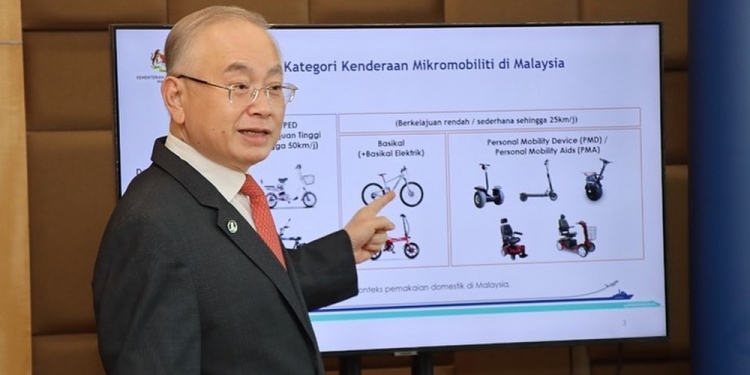Transport Minister Datuk Dr Wee Ka Siong has held a press conference to provide clarity on the banning of certain micro-mobility vehicles on public roads. The ban covers three categories namely mopeds, Personal Mobility Devices and Personal Mobility Aids (PMA), which are powered by an electric, internal combustion engine, human or a combination of electric, internal combustion engine or human, with speeds up to 50km/h.
The ban actually came into effect on 17th December 2021 following the gazette of the Road Traffic (Prohibition of use of certain micro-mobility vehicles) Rules 2021 that was published late last year. The decision on the ban was based on the safety of road users, to reduce the risk of fatal accidents, congestion, and other financial implications involving property damages and medical costs.
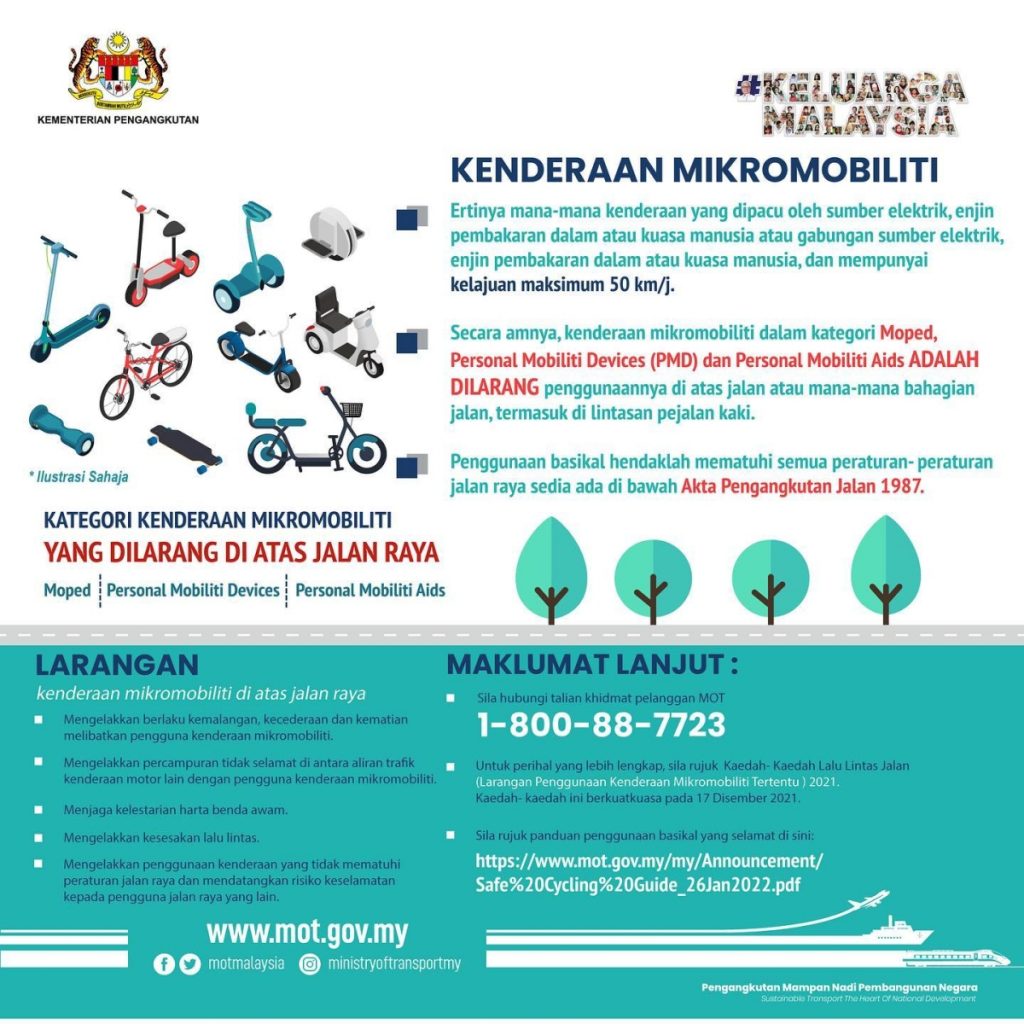
Moped, PMDs and PMAs banned from public roads
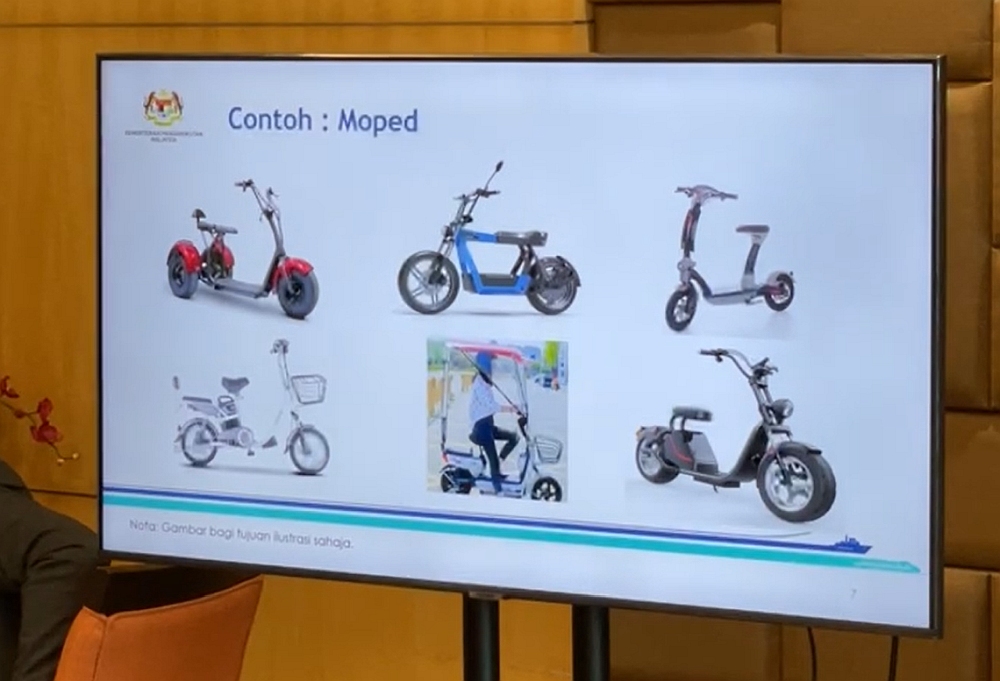
Mopeds are essentially low-powered motorcycles powered by an electric source or internal combustion engine, which are often fitted with two or three wheels. These vehicles weigh not more than 150kg and can move at speeds not exceeding 50km/h.
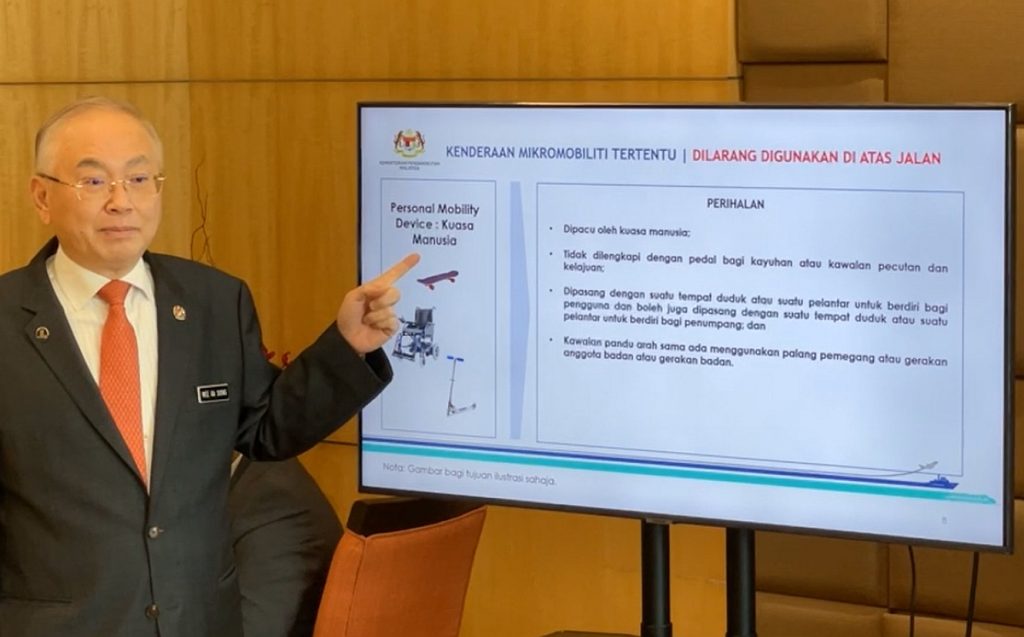

Meanwhile, the banned personal mobility devices cover both powered and non-electric powered types with speeds not exceeding 25km/h. This includes skateboards, wheelchairs, and non-powered scooters, as well as powered devices such as electric scooters (eScooters), Segways and also eScooters with built-in seats. In case you’re wondering, the ban also includes hoverboards and electric unicycles as well.
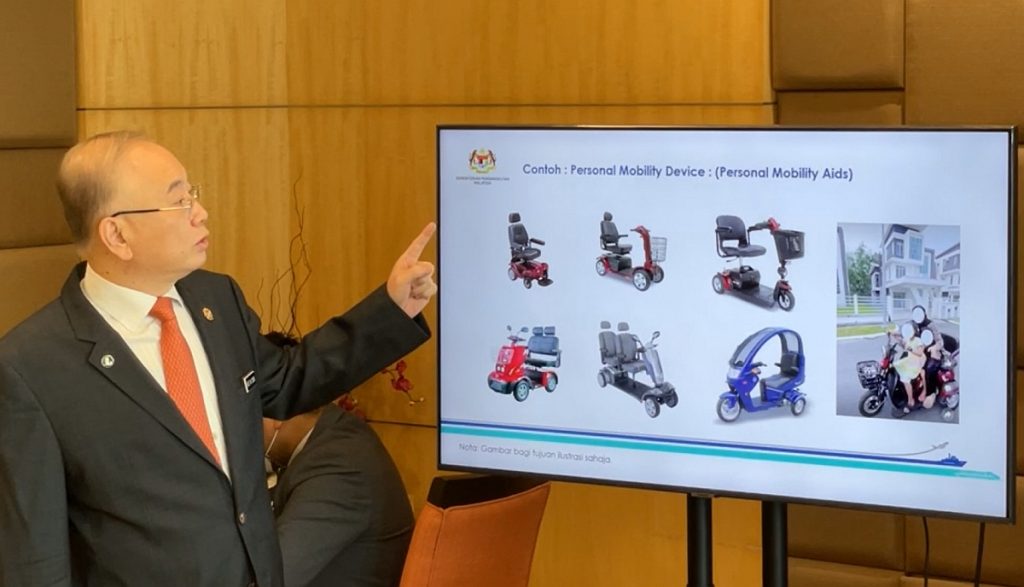
The third category that’s prohibited on public roads is Personal Mobility Aids. These include electric wheelchairs or handicap scooters, which are useful for people who can’t use manual wheelchairs.
According to the provided infographic, the three categories of micro-mobility vehicles are not just banned on public roads but also on any part of the road including pedestrian crossings.
Bicycles and electric bikes are allowed
According to the Ministry of Transport, the usage of bicycles including trishaws is still permitted on public roads but they must adhere to all rules under the Land Transport Act 1987 as well as the Road Traffic Rules 1959. This also includes electric-powered bicycles or eBikes, which are also permitted on the road but they must fulfill the Malaysia Standard MS2514: Electric Bicycles (Electric Pedal Assisted Bicycles) Specification.
Wee Ka Siong emphasised that modified bicycles including Basikal Lajak are not allowed and are a violation of the Land Transport Act 1987. He also shared that the guidelines on the safe use of bicycles have been issued by MIROS and are available for download on MOT and MIROS websites.
The Ministry of Transport has also highlighted several areas for improvement. This includes having public transport facilities as well as road infrastructure to support micro-mobility vehicles, to ensure there’s no mixing of traffic with other types of vehicles. The relevant authorities should develop micro-mobility usage guidelines and regulations to manage the use and service providers of such devices. It also emphasised the need to develop guidelines for active mobility planning which will serve as a reference to all authorities. Lastly, there should be advocation and awareness campaigns to promote the safe usage of micro-mobility vehicles.
In case you missed it, we’ve compared several ways to move around Kuala Lumpur which include an electric scooter and electric bicycle. From our experience, there’s a lack of proper infrastructure to enable the safe use of such micro-mobility vehicles. Besides the lack of consistent pavement, the bicycle lanes are not well protected from other road vehicles.
Related reading
- Beam vs Tryke vs Walking: What’s the best way to travel around KL? | Trends
- Transport Minister: By-law for eScooters to be introduced soon, licence may be required for certain micro-mobility vehicles
- You can be fined or jailed for riding eScooters on public roads in Malaysia, warns police
[ SOURCE 2, IMAGE SOURCE ]

